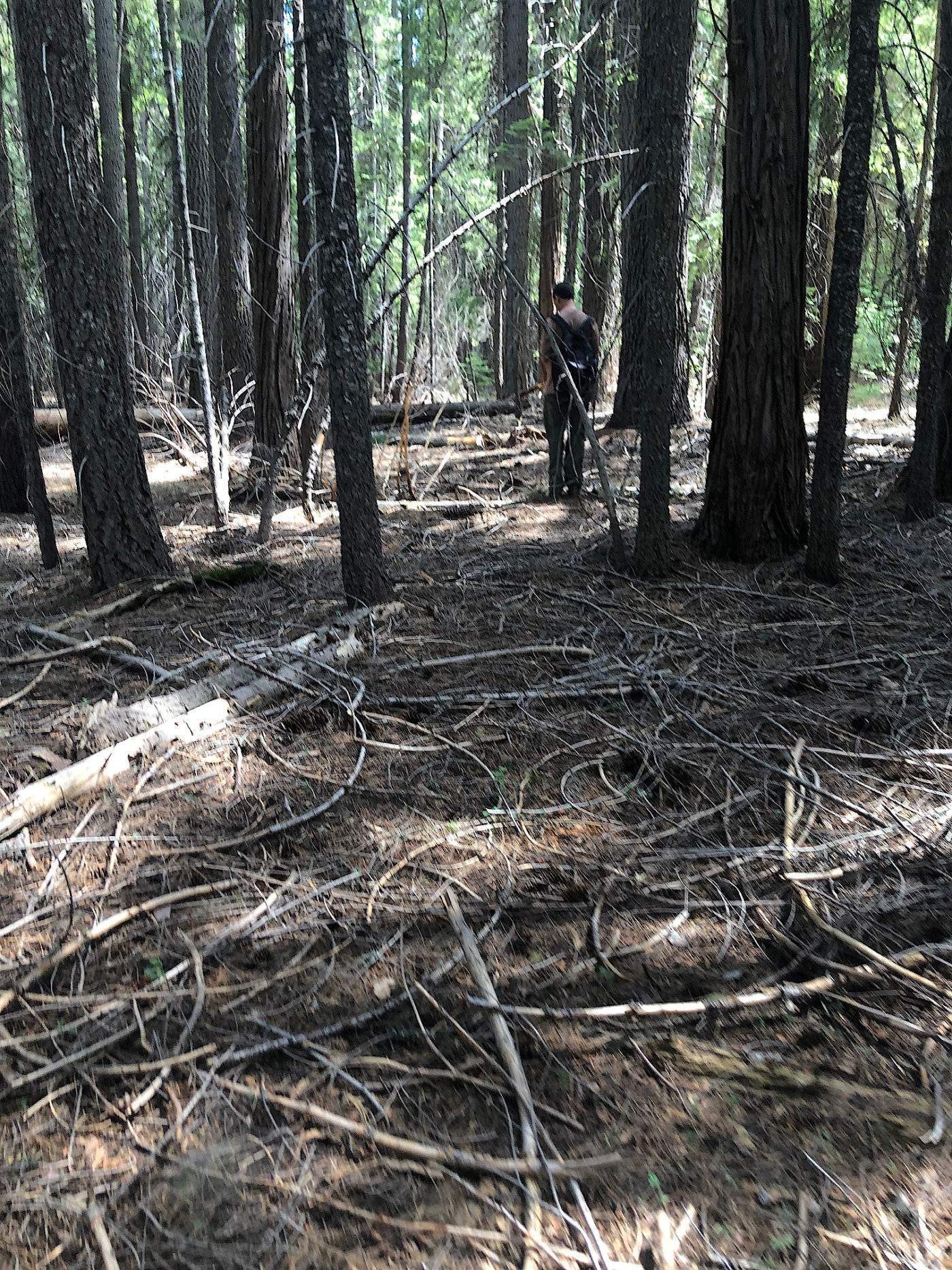What is necessary to protect local wildlife is also necessary to protect local people.
This spring, I found myself driving cross country from coastal southern Virginia to the northern Sierra Nevada Mountains, all on my own (well, somewhat on my own – I had my three cats in tow in my tiny sports coupe). I had made the decision to uproot myself to take on an exciting new role as a Wildlife Resource Specialist with the Sierra Institute. The felines and I skirted the mountain roads on a gloomy day punctuated by snow flurries and freezing rain, likely looking more out of place with each passing minute. We eventually made our way to Indian Valley, where I was certain that the years I had spent cultivating a path for myself to provide meaningful, palpable impacts on wildlife and our natural environment would come to fruition. I had only ventured to the Sierras once before, during a vacation with my mother in 2013. My experience was perhaps one akin to the “typical” Sierra Nevada tourist, with most of my time spent in Yosemite. I had never ventured to the northern stretches of the range, and I had certainly never heard of Taylorsville, CA. My work had focused on wildlife conservation and management all over Arizona, from working at a wildlife rehabilitation facility in the Sonoran desert to interning with the U. S. Fish and Wildlife Service on the Colorado Plateau in Flagstaff, just south of the Grand Canyon. I had conducted research in the Pampas grasslands of Argentina, where I studied wildlife responses to plantation forestry practices. My areas of regional expertise bore no resemblance to this slice of northern California. Regardless, I remember reading over the job listing for what would become my position with the Sierra Institute and thinking, “Yes. This is the work I was meant to do.”

Now at the Sierra Institute my current largest priority is the West Shore Community Wildfire Protection Project (West Shore Project). The West Shore Project aims to mitigate wildfire risks to the communities of Prattville, Lake Almanor West, and Big Meadows, all of which are located within the Wildland Urban Interface (WUI)*. The project will also endeavor to reduce the risk of catastrophic wildfire to ecosystems and wildlife habitat. This is critical to keep wildfire from absolutely decimating species’ critically necessary habitat. In recent decades the increased intensity of wildfire throughout the Intermountain West has become significant due to extremely dense forest conditions created from roughly a century of fire suppression. It is easy to forget the important role fire plays in a healthy forest ecosystem. By reducing surface and ladder fuels and keeping forest density in check, healthy fire burns at a lower intensity that can rejuvenate our forests, maintain and improve wildlife habitat, and keep communities safe from catastrophically intense wildfire that is difficult to manage and control. Walking around the project site through dense, overgrown forest stands in California spotted owl and northern goshawk habitat, it became clear just how quickly the places these birds use to nest, roost, and forage could disappear. It was also easy to make the connection that what is necessary to protect local wildlife is also necessary to protect local people.
With all of that information whirling around in my new resident brain, I spent the summer trekking through the forest, getting involved in everything I could to truly understand the local landscape. I found myself searching for California spotted owls, northern goshawks, and great gray owls, working with a forestry crew to collect forest stand health data, and combing through completed carnivore study data for species like the Pacific fisher. It was critical for me to learn the ins and outs of the project’s landscape in order to confidently analyze the area’s sensitive, threatened, and endangered species. All this to provide recommendations that would lead to the best outcomes for the wildlife, the land, and the communities for which my team and I found ourselves advocating. Having a comprehensive understanding of the interconnected nature of these different aspects was paramount in order to achieve results that would be most beneficial for all elements at risk.
After a few months of working on this project, I find myself recalling my first West Shore Project site visit, when I got my initial glimpse of the shore of Lake Almanor with my teammates. I gazed up at Lassen Peak, coated in snow, reflecting perfectly off of the water’s glassy blue surface. I quickly understood why this place holds such significance for so many people in our local communities. For me it is a place in which I enjoy recreating, as I am always looking for a new chunk of splendor to unfold in front of me. It is also a place I respect. I respect this place that supplies beauty and a relaxed pace for its residents and its visitors, providing a unique sense of place matched by very few locales. Of course, as a wildlife gal, I can’t help but hold it dear for the home it provides to awe-inspiring species that I so luckily get to study. Hopefully my work will continue to provide me with opportunities to proactively work to protect this land and all of its inhabitants, both of the wildlife and of the human variety.
As a wildlife gal, I can’t help but hold it dear for the home it provides to awe-inspiring species that I so luckily get to study.


